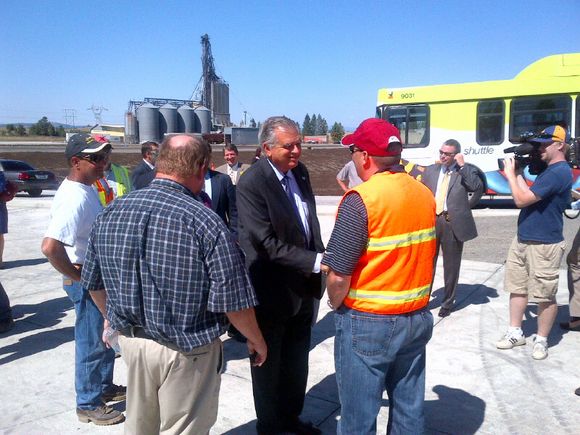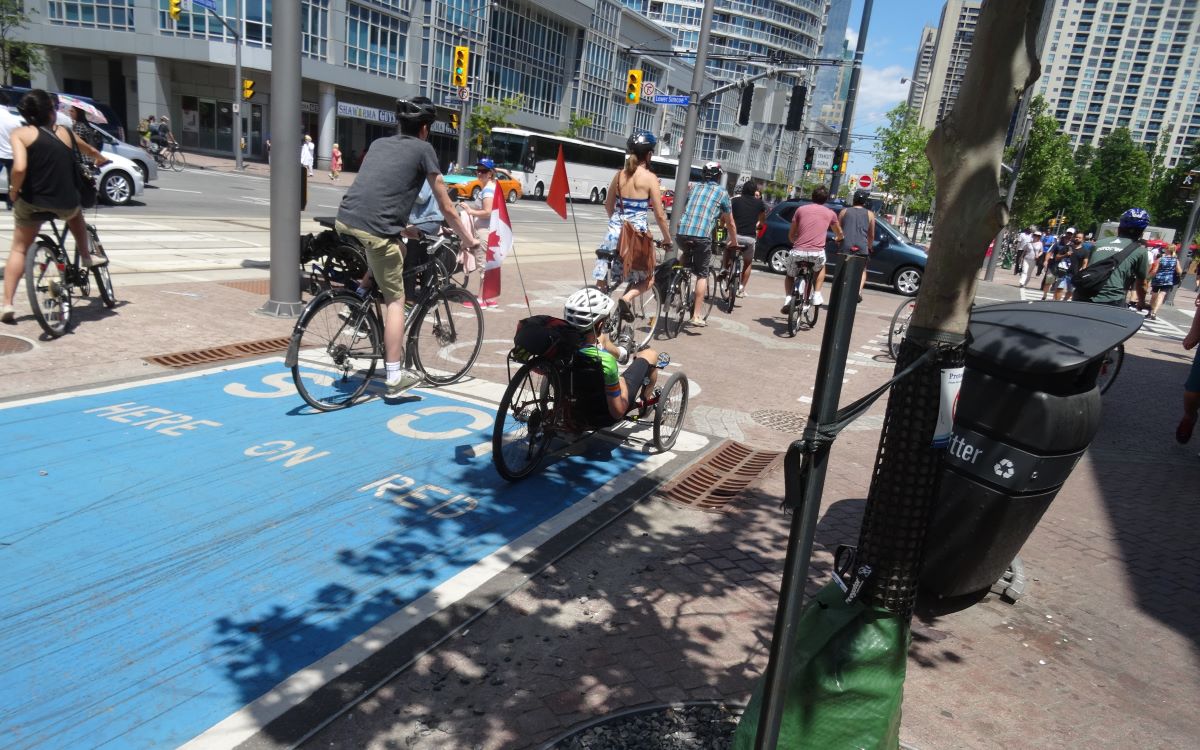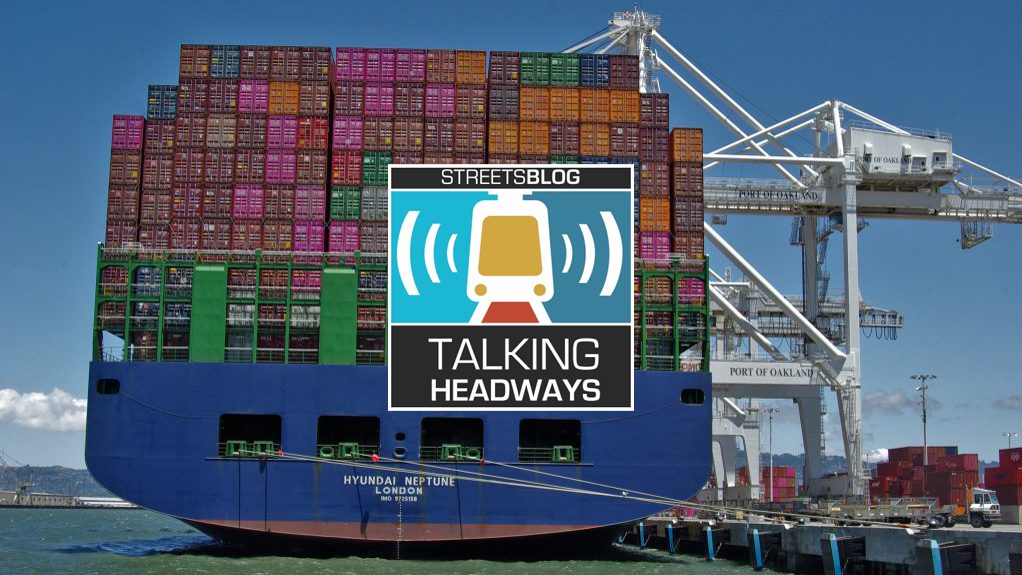On Thursday, DOT Secretary Ray LaHood announced the creation of a new Freight Policy Council, which is charged with coming up with a freight strategic plan. This is a first step toward a sorely lacking national plan around freight.

The movement of goods accounts for about a quarter of all transportation-related emissions. Every American is responsible for 40 tons of freight a year, according to DOT. Everyone agrees that freight is essential for the economic well-being of the country, and much more so given President Obama’s stated goal of doubling exports by 2015. “A more efficient freight network will reduce traffic congestion, environmental impact and shipping costs, which will lead to lower prices for consumers,” according to a press release by U.S. DOT. But up until now, there’s been no coherent policy around freight, or any governmental body tasked exclusively with looking at it.
A bill to create a national freight strategic plan and a permanent freight planning office at DOT was introduced two years ago but was always intended to be rolled into a reauthorization, not passed as a stand-alone bill. MAP-21 captured most of the elements of that plan, and advocates are glad to see it moving forward.
“Creation of a high-level, multimodal Freight Policy Council will go far in ensuring MAP-21’s freight provisions increase efficiency across all modes of the national freight network,” said Mortimer Downey, chair of the Coalition for America’s Gateways and Trade Corridors, in a statement. “Establishment of this Council signals a praiseworthy commitment to our national economy and global economic competitiveness.”
The operative word there is “multimodal.” For sustainable transportation advocates, that’s the key to whether this council – and the plan it comes up with – is transformative or disappointing. “Are they going to build a lot of truck-only lanes or are they going to look toward a smarter future where we’re moving as much as possible off the roads?” asks Ann Mesnikoff, director of the Sierra Club's Green Transportation Campaign. “It is certainly time that we take a very close look at how we are moving freight and ensure that we do as much as possible to slash oil consumption, carbon pollution and the dangerous air pollution associated with freight.”
U.S. DOT didn’t need legislation to move forward on creating a national freight plan. Sen. Maria Cantwell (D-WA) urged LaHood to do so months ago, using his existing authority. But MAP-21, signed into law July 6, gave the agency the kick in the pants to get it done.
In her May letter to LaHood [PDF], Cantwell emphasized that multimodalism is precisely the reason such a council is needed. Since there is currently no freight-oriented body at DOT, freight projects are delegated to various modal silos without coordination. Rather than looking at the most efficient mode, an agency will simply design the project around the mode it knows. “Many freight projects are multimodal and sometimes require redundant approvals for a single project,” Cantwell wrote. “The proposed freight initiative could assume a coordinating role among various offices, reducing costly repetitious work while upholding our obligation to the environment.”
The council, which will meet for the first time this week, will be chaired by Deputy Transportation Secretary John Porcari. DOT officials from highways, rail, ports and airports will be represented, as well as other economic and policy experts from across the Obama administration, according to a DOT press release. Industry interests, consumers, and "other stakeholders" will also play an advisory role.
But who are those stakeholders? In order to truly “uphold our obligation to the environment,” as Sen. Cantwell urges, Mesnikoff hopes DOT is paying attention to the needs of the communities most impacted by freight, especially those near Detroit, on the Mexico-U.S. border, and near ports. “Close attention needs to be paid to communities bearing the brunt of freight pollution and congestion,” she said.
According to a presentation by Swati Prakash of the Pacific Institute [PDF], an environmental research group, those community impacts are numerous and severe.
Low birthweight babies, asthma in children, and stroke and heart disease in adults can result from air pollution. Plus, “co-location of industrial land uses with housing creates incentive to stay indoors,” Prakash says. Corridors traveled by trucks – and with trucks parked on streets -- often create hazards for pedestrians and a “reduced sense of safety.” Poor neighborhood walkability means a less physically active populace and more obesity. Even poor school performance in neighboring communities can be attributed to the noise and vibrations of passing trucks.
Advocates will be watching to make sure that these concerns are front and center as the council tries to re-engineer the U.S. freight system. But the new council isn’t the be-all and end-all of the Obama administration’s efforts. The TIGER grant program for innovative transportation projects has given out more than $953 million to 50 freight-related projects, with more than a third of TIGER funding going to port improvements. Freight projects are also eligible for loans under the Railroad Rehabilitation and Improvement Financing (RRIF) program and the newly expanded TIFIA program.




